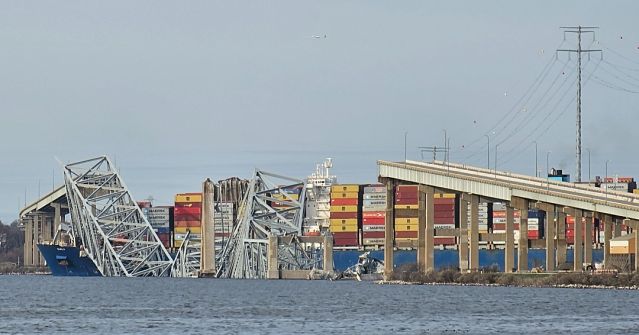Driver Shortage – What can we do about it?
According to the American Trucking Association, trucks move approximately 72.5% of America’s freight based on weight. That equates to about 11.84 billion tons. This number is predicted to ride an upward curve as consumers continue to demand quick delivery times from online purchases and higher in store product availability.
Driver shortage becomes a hot priority topic as it is predicted to reach 160,000 less drivers by 2028. Per Monster.com, truck driver positions are in the top 10 list of hardest jobs to fill. Let’s first look at why that is.
Why is there a driver shortage?
It might seem unbelievable that an occupation that could generate $80,000+ in salary per year would not be in high demand for those seeking a career. The fact is trucking companies are not facing a shortage of applications – they are facing a shortage of qualified candidates. Motor carriers have, unsurprisingly, placed emphasis on hiring “Quality over Quantity” as driver professionalism and safety are top priorities.
Age is an uncontrollable but significant contributor to driver shortage. The median age of commercial truck drivers in the United States is 46.5 years old with over 54% in the 45+ age range. When the average age for retirement depending on state is 61 – 67 years of age, having more than half of the truck driver population so close to retirement poses a significant challenge. Ideally the industry will try to recruit younger drivers; however, legislation and insurance make that strategy difficult. For people graduating from high school, jumping into a career that can earn them around $45,000/year to start with a potential wage of $80k+/year would be an attractive option (especially since the training required isn’t as time consuming as obtaining a diploma or degree). Unfortunately, the age requirement for an interstate driver is a minimum of 21 years. This means that high school graduates who are attracted to the industry need to wait on average three years to pursue this career; not to mention, insurance companies will often not cover them until they have gained 2 – 3 years of experience on the road. Often, these potential drivers find other career paths in that time frame.
The “on-the-road lifestyle” is another reason to target potential drivers under the age of 21. Drivers normally start out on the longer routes that can keep them on the road for 1 – 2 weeks at a time. As they progress in their careers, they achieve tenure that keeps them on shorter routes which increases their work/life balance. Younger drivers who do not yet have families of their own are more willing to be on the road for longer stretches early in their careers.
In addition to age, legislative changes to industry regulations (like hours of service and ELDs) are frustrating for drivers and have caused some older drivers to retire from the industry early. Further, lowering hours of service reduced productivity which means there are more drivers needed to move the same amount of freight.
The gender gap in the trucking industry limits potential driver growth. Since 2000 only 4.5-6.6% of all drivers each year are women. Some companies are working hard to recruit women to the industry; however, even those companies only have about 20% of their driver workforce made up by women. With just over 50% of the US population being women, the low recruitment of female drivers is limiting the profession to only half of the total population.
Are there answers in driver turnover?
Driver turnover and driver shortage are not the same thing; but can we derive some answers to driver shortage from analyzing why drivers move from one carrier to another? Driver shortage means that drivers, especially those with excellent safety records combined with years of experience, can jump from company to company for attractive incentives. Shockingly truck driver turnover was at 83% in 2019. Consider this – if you had 100 employees – that means that 83 of 100 would have left the company in one year!
So why are they leaving? Competing companies are offering great signing bonuses on top of salary increases. They offer newer trucks equipped with automatic transmissions, comfortable interiors, and safety features like automatic breaking. Drivers can get better routes with increased work/life balance. A highly attractive incentive to change companies is better benefits which, especially to the aging trucker population, can mean paying significantly less for their medical coverage. Based on reasons drivers are jumping from one company to another we can derive insights about what needs to be done to attract new drivers and retain existing ones.
How to attract new truck drivers to the industry
Attacking driver shortage might require changes to legislation. Increasing hours of service alone would mean increased productivity allowing fewer drivers to haul more freight. By lowering the age limit for drivers to enter the industry, companies can recruit and train potential drivers right out of high school.
When the industry is facing a driver shortage – limiting recruiting to 50% of the population simply doesn’t make sense. Advertising career opportunities on websites or social network groups that target women is a great way to get the message out there. Purchasing equipment that is ergonomically designed for both men and women is also a solid strategy. Historically, the industry has been dominated by men, so a lot of driver specifications are based mostly (or totally) on male drivers. Many female drivers have reported harassment, discrimination, and general negative feedback from their male counterparts - and even from their male trainers and dispatchers. Having a zero-tolerance policy for this type of behaviour is essential.
While working to promote trucking to more women via social media networks, industry leaders can also commit to changing the image of the “typical truck driver”. Historically the perception of a truck driver elicited negative connotations. Carriers are working to hire a high standard of driving professionals – professional being the key word. By changing the overarching perception of what it is to be a truck driver, the profession can reach a larger audience.
Work life balance for both male and female drivers can be a major reason for leaving a company or the industry completely. Companies offering more time at home, paid vacation, and even better route building will attract more drivers. When building routes, it is key to keep drivers on a path that allows for regular rest stops to use washrooms, re-hydrate, stretch and/or do light exercise. Some companies have even invested in providing drivers with resources like those offered by Healthy Trucker or Reset Wellness Co. that have programs designed specifically for improving truck driver health. Providing in cab WIFI and technology like iPads that allow drivers to have “virtual face-to-face” communication with their families while on the road can also ease the stress of being away from home.
Naturally, income is a major way to attract new drivers and keep current drivers. In 2018 when the driver shortage hit an all-time high, driver wages increased significantly. Competing carriers continue to offer increasingly attractive signing bonuses in hopes that any new or current drivers in the market will be drawn to their organizations. Some carriers have even offered drivers a “minimum pay” for more reliable financial planning.
If you have questions or comments about this post or if you have suggestions about how to improve the driver shortage situation, please email marketing@traffix.com.



